If you’ve ever launched a digital marketing campaign, you know how much time and attention is poured into the creative, copywriting, and media placement strategy. And once you’ve finally reached the finish line, eagerly awaiting the results and new leads to pour in, you’re met with: crickets. Plenty of impressions, and plenty of clicks, but crickets of silence when it comes to conversions. You’re left scratching your head wondering where the drop-off has occurred. Chances are, your landing page may not be optimized to meet expectations. Conversion rate optimization is a complex process that involves multiple variables and often a great deal of testing. However, the form UX is a consistent driver of campaign success or lack thereof. Bluetext, a leading digital marketing & campaign agency, breaks down some contact form best practices that can help ensure the success of your next marketing campaign.
A popular tactic to increase the likelihood of form completion is minimizing the number of fields to make your form seem as quick and efficient as possible. This means reevaluating what information is critical versus what is nice to have for your sales team. For most companies, more information than just a name and email address is necessary for lead qualification and to begin sales reach or retargeting. Eliminate any fields that aren’t required from your default contact form and consider additional UX tricks to make a form seem less intimidating.
- Adjusting the form layout to improve scannability. While a double-column form will decrease the length, research shows that single-column formats are faster for users to complete and easier for the eye to scan (not to mention they are more compatible with mobile devices).
- Consider the order in which you are asking for the information. Ask the easier questions up front (like first and last names) and more specific information (like company revenue size) later. This makes the form appear more manageable at first glance.
- Group related information together in steps, and if the form is progressive or contains multiple steps be sure to indicate what steps have been completed and which remain.
- Make field labels clear and concise to describe the information requested and indicate whether it’s mandatory or optional.
- Leverage easy radio buttons for questions where you want a single answer from a limited number of possible options (for example Yes / No questions or “Pick from these choices” )
- Using a colorful background to your form also can increase the completion rate, as it creates more contrast between the information field and page. It draws the eye to the form and can build stronger brand associations.
- Implement error handling in-line and early on. Check for potential problems with the data immediately as the user enters text into a form field and presents any errors and solutions at the moment, rather than waiting until later (post-submit). Error messages should be visible, provide sufficient visual identifiers (the color red, error symbols), and articulate the problem in plain language and how it can be resolved.
- Provide key proof points & relevant benefits directly next to the form – this positions the persuasive information directly next to the action, making the requested next step (completing the form) as convenient and easy as possible.

If your landing pages need some love, or perhaps just a third-party eye with conversion rate optimization (CRO) expertise, contact Bluetext to learn about our campaign services.
Imagine you’ve just launched your latest advertising campaign. After months of conception, perfecting your ad creative, crafting a compelling message, and putting together a thought-through media placement and budget, you’re confident this campaign will convert. But after a couple of weeks of monitoring, your KPIs aren’t meeting expectations. Or at least the ones that matter to your business’s bottom line. Investing more media dollars, refining the target audience, and maybe adding some new placements, is yielding more impressions and clicks, but no conversions. It seems users are interested in your offer, but not willing to take the next step. So where is the disconnect? It may be time for a more critical eye to review your landing page and engage some experts with conversion rate optimization services.
Digital marketing campaigns have a wide range of key performance indicators (KPIs) that define what is considered a “conversion”. Therefore, the first step to any successful advertising campaign is to determine a single goal. The two most common campaign goals are brand awareness and lead generation. Both are equally important, however have key differences in both tactics and intended results.
Lead generation is the process of capturing critical information from potential customers, usually by means of a contact form, to move them into a marketing funnel for retargeting or sales outreach. Lead generation is used to build lists of people who have expressed some sort of interest in your product or services, and provides an opportunity to engage them with the next steps. Brand awareness, on the other hand, is more geared toward making an initial introduction of your brand to a potential customer and educating them on products and services that they may not yet be familiar with. If you imagine it like a cocktail party, brand awareness is the “nice to meet you” handshake, while lead generation is going in for the friendly hug with an acquaintance.
Establishing these goals is a necessary step to any campaign, even required by many platforms in the initial setup. Regardless, if your campaign entails a landing page outside of the advertising platform (ex. social media feed, or Google search), it’s critical to consider what you intend the user to do after seeing or engaging with your ad. That’s where landing page conversion optimization comes into play. The content hierarchy and UX of your landing page is just as important as the ad headline or creative, especially if your goal is down-funnel lead generation.
Bluetext offers a range of conversion rate optimization services and conducts regular and thorough performance analyses of landing pages to improve the effectiveness of any digital marketing campaign. Below are a few best practices to follow as you continue to monitor and optimize your landing page performance.
Optimizing Form Strategy
The primary means of generating sales leads and obtaining information from a user is through contact forms, which may be offering a demo from your sales team, a consultation, a free trial, or an exchange for a downloadable asset. Now more than ever, users are hesitant to give up their information, so you must exchange something of value to them. To entice a user to willingly give up their contact information, you have to balance the level of effort with value. To minimize any friction, your landing page should make your form as simple as possible. That’s why so many businesses embrace the trend of first viewport form placement, which means either all or part of your form is visible upon the initial page load. It requires no scrolling or page engagement to find and complete the form.
Another popular tactic to increase the likelihood of form completion is minimizing the number of fields and making your form seem as quick and efficient as possible. This means reevaluating what information is critical versus what is nice to have for your sales team. Optimizing your landing page contact forms is another highly effective tactic to improve conversion rates.
Improved Information Hierarchy
The most common pitfall marketers tend to make with campaign landing pages is overestimating the user’s attention span. In the eyes of a sales or product team, all information is good information; everything they have to say is interesting and relevant to a potential customer. And yes, providing full information is crucial to closing a sale, but those nuggets of information have a time and a place. In the initial stages of a prospective customer’s evaluation, it is critical to focus their attention on the most pertinent information that would persuade them to complete the desired action (usually a form completion).
Rithum, a leading e-commerce platform, engaged with Bluetext’s digital orchestration & conversion rate optimization services. Since then, thorough A/B testing and landing page variations have been implemented to continually optimize the page towards the key KPI: high-value form fills. Let’s investigate the landing optimization process and key insights:
Initially, a series of landing pages were launched with corresponding PPC campaigns to create brand awareness around a newly formed company. Following a merger of two industry leaders, ChannelAdvisor and CommerceHub, Bluetext & Rithum collaborated on a brand announcement landing page. This featured a brand video as the highest priority on the page, followed by key benefits, value to core audiences (retailers & brands), and promotion of their full platform’s e-commerce ecosystem. It was a long, yet important story to tell so the landing page was geared towards upper funnel awareness.


In the months that followed, lead generation became the goal, as that initial introduction was made and now it was time to convert users into prospects. The PPC campaign remained focused on brand terms, but the landing page needed to be optimized to the why rather than the how. To minimize distractions, the page was simplified to prioritize the Request Demo form in the first viewport, with supporting copy that emphasized the short amount of time a sales consult would take out of a user’s day (who doesn’t have 15 minutes?) and the top five pain points that Rithum solves for customers. Much of the previously displayed information was also distilled down to two of the most important points: the benefits of the platform & wide breadth of international marketplaces customers obtain access to. The page is now short and sweet, without any distractions and off-page CTAs. As for the previous page context? Still important, but can be delivered in the sales consultation or on the main website pages.
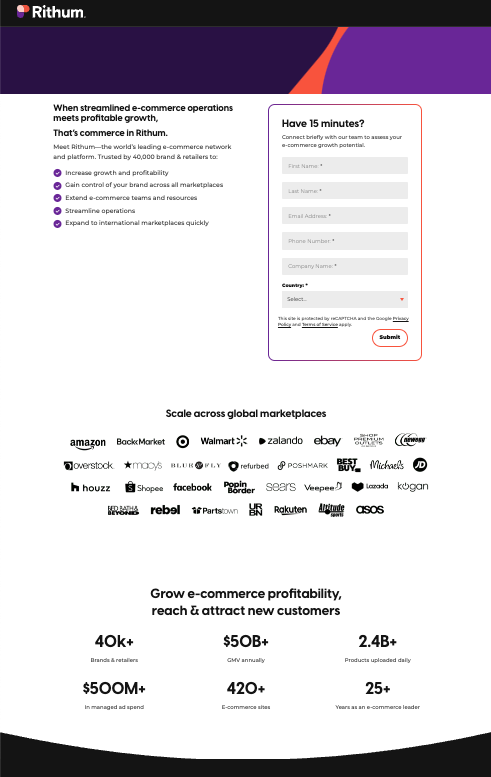
If your landing pages could benefit from conversion rate optimization, consider these best practices:
- Prioritize lead generation opportunities (for example, demo request forms) at the top of the page, ideally within the first viewport
- Eliminate any CTAs that may drive a user off the landing page
- Distill critical information to only 2-3 components
- Position the key value drivers or proof points that would capture a user’s attention next to contact forms or within the first viewport
- Hide the main website menu to eliminate chances of leaving the page
- Incorporate compelling copy that will hook the end users to convert – “Have 15 minutes?” is a clever hook because it sets an expectation for the call and leaves little room for the excuse of too little time.
If your landing pages need some love, or perhaps just a third-party eye with conversion rate optimization (CRO) expertise, contact Bluetext to learn about our campaign services.
With new channels and platforms constantly emerging in today’s evolving digital landscape, it’s easy to get lost in the buzz of the latest ‘shiny new toy.’ Today, it’s more important than ever that when executing digital orchestration initiatives, that we never lose sight of the main goal, and the main KPIs we are looking to achieve. Yes – it can be helpful to tap into new channels and a/b test different tactics, but only to the extent that it will help achieve your campaign’s goals.
What Is Digital Orchestration?
As a refresher, digital orchestration refers to the strategic coordination of digital marketing channels, tools, and platforms to deliver a consistent and impactful message to your target audience. Digital orchestration is the practice of aligning technology to marketing efforts, creating a seamless customer experience across multiple touchpoints. In simpler terms: our goal as digital orchestration conductors is to ensure that all of our marketing efforts – from paid media to SEO to PR to user experience on the site – are aligned to help deliver the end goal, whatever that may be, to our clients.
When kicking off a digital orchestration project, the first question we ask our clients is: what is your goal? What are looking to achieve in the digital space? The two primary answers we hear are:
- Brand Awareness – to gain more brand recognition in the space, increase our Share of Voice and our market share footprint across organic and paid efforts.
- Lead Generation – to drive more users down the funnel to convert through a high-value form submission, driving more quality leads, at a lower cost per lead.
These two goals often complement each other, and if our client has not spent time investing in brand awareness before we launch our digital orchestration program, we will recommend a phased approach – phase 1: brand awareness, phase 2: lead generation. While lead generation is typically the bottom-line goal, it is critical to gain brand recognition before working towards leads. We cannot achieve lead goals if no one knows who our client is.
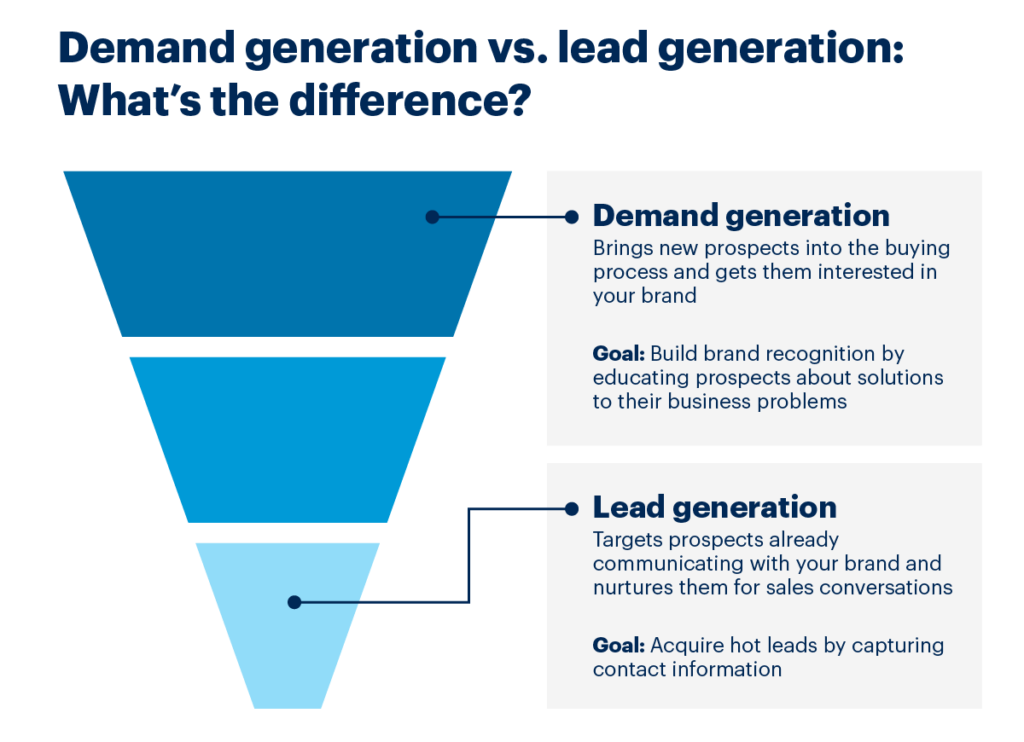
If the goal is brand awareness, our team looks at a variety of key KPIs per channel:
-
Organic Search
- Page Rank for branded terms, and the increase in rank we see over time
- Bounce Rate on the site – once users land on the site from organic search, are they immediately bouncing?
- Pages/Session and Return Rate – similarly, if they land on the site through our branded terms, how many pages are they engaging with, and do they return to the site? If so, how often?
-
Organic Social:
- Impressions on new branded posts. Is the number of users seeing our posts increasing as we post more frequently?
- Follower count – are we seeing an increase in followers as we enhance our organic social footprint?
- Engagements – Are users interacting with our posts? We also want to ensure all – if not most – engagements (comments, reactions, etc.) are positive.
- Click-Through & Site Engagement – are users visiting our site through our organic social posts? Similar to organic search, are they returning to the site, and visiting multiple pages?
-
PR:
- Share of Voice – are we seeing an increase in share of voice in the marketplace from an increase in branded press releases and announcements?
-
Paid Media:
- Impressions & Clicks – volume is critical for generating mass awareness, and paid media is the only channel where we can pay for that volume. The first touchpoint of the funnel is getting eyes on the ads, and then getting users to click through to the site.
- CTR – in addition to volume, it’s critical that we target the RIGHT audience. We don’t want to cast too wide of a net and drive irrelevant volume to the site. In addition to strong volume metrics, we want to see a high CTR for each channel
- Site Traffic – Like other channels, our goal with paid media is to drive an increase in traffic to the site. We want to see an increase in sessions, pages/sessions, and new users on the site.
- Site Engagement – is the traffic that we are driving through paid spending time on the site, or are they bouncing immediately?
- CPCs & CPMs – how much does it cost, on average, to drive users to our site? How much does it cost to reach our target audience?
If the goal is lead generation, our KPIs per channel shift to focus on actions that end users are taking on the site:
-
Organic (Social, Search, PR):
- Form Submissions: are users navigating to demo request or contact us form to gain more information?
- Session to form submission rate: how often are users visiting the site proceeding to fill out a form? Typically, how often does a user visit the site before submitting a form?
-
Paid Media: along with the KPIs in the Organic section, we also measure:
- Cost/Conversion: On average, how much does it cost for us to drive a form submission? We will measure this against industry and paid channel benchmarks
- Conversion Rate: How often are users converting once they click through to the site? How does this vary between brand and nonbranded campaigns/keywords?
Once we have established our goals, and therefore the key KPIs we want to monitor for our digital orchestration efforts, we can start to seamlessly track, monitor, update and optimize our paid campaigns and organic initiatives.
Our team leverages tools like Google Looker Studio to create real-time reports that consolidate data across all channels and touchpoints, allowing us to see 1) how our KPIs are trending per channel and 2) how our overall digital orchestration strategy is performing based on our primary goal.
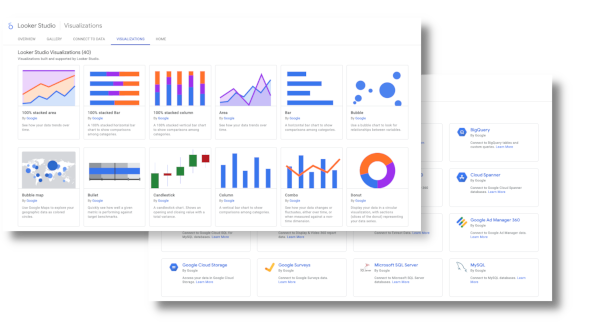
Most importantly, our comprehensive reporting allows us to easily review our data, and apply updates to our strategy based on what we’re seeing. For example, if users are bouncing once they visit our campaign landing page, we should test different landing page variants. Does the copy align to our ad? Is the user experience intuitive? Should we add a lead form above the fold? There are countless tests we can implement, and the beauty is we can continue testing until we see the results we are looking to achieve!
In conclusion, when deploying a digital orchestration program, make sure you are aligned on the primary goal. Identify the KPIs that you want to measure and monitor, and consistently review those KPIs to ensure your digital orchestration strategy is performing to the best of its ability. Don’t be afraid to a/b test landing pages, messaging, CTAs, imagery, etc. As long as you never lose sight of your primary goal, you’ll be on track to achieve the KPIs you want to see.
Ready to take your marketing to the next level? Contact Bluetext to learn about our digital orchestration services and how this could be tailored to your business’ objectives.
In a world where the digital battleground is ever-evolving, the way we visualize cyber threats is more than just a matter of aesthetics. It’s about conveying a message that resonates with the complexity and urgency of the challenges we face. Over the years, cybersecurity branding has gone through various phases, from the ominous figures in dark hoodies to monstrous depictions of malware. But now, a new trend is emerging—one that’s straight out of a science fiction saga.
The Evolution of Cyber Security Symbolism:
Let’s take a quick trip down memory lane to understand how cybersecurity brands have evolved in their visual language:
- The Hooded Figures: Once upon a time, cybersecurity brands leaned heavily on the stereotype of hackers as mysterious figures cloaked in darkness, lurking in the shadows of the digital realm. While this imagery effectively conveyed the sense of a hidden threat, it also perpetuated stereotypes and failed to capture the true nature of cyber adversaries.
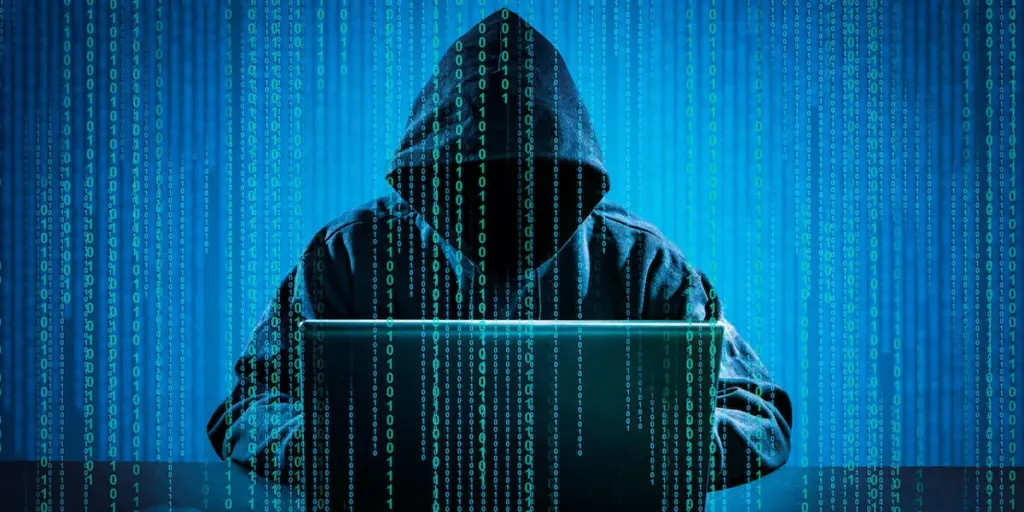
- Abstract Digital Art: In this phase, cybersecurity brands leaned towards abstract digital art to represent cyber threats. They utilized geometric shapes, neon colors, and glitch effects to convey the complexity and unpredictability of digital vulnerabilities. While visually captivating, this approach sometimes lacked a clear connection to the real-world implications of cyber attacks.

- Monstrous Malware: As the threat landscape expanded, so did the imagery associated with cyber threats. Brands began depicting malware as monstrous creatures, embodying the destructive potential of cyber attacks. While this approach added a layer of visual interest, it often bordered on the cartoonish and failed to convey the sophistication of modern cyber threats.

But now, a new era has dawned in the world of cybersecurity branding—one that draws inspiration from the boundless realms of science fiction. Enter the age of Sci-Fi Inspired Branding.
Incorporating elements from the vast expanse of the cosmos, cybersecurity brands are embracing a visual language that speaks to the futuristic nature of the challenges we face. Here are some examples of websites that are boldly venturing into this new frontier:
- SecurityScorecard: With its sleek interface and futuristic aesthetic, SecurityScorecard’s website feels like something straight out of a cyber-thriller video gam. The use of dynamic visuals and futuristic typography conveys a sense of innovation and technological prowess. Check out how Bluetext contributed to this brand revolution.


- Cybereason: Cybereason’s website takes visitors on a journey through the digital universe, with swirling nebulae and sleek spacecraft serving as the backdrop for its cybersecurity solutions. The use of space-themed imagery reinforces the brand’s message of protecting against unknown threats from the far reaches of the digital universe.

- CrowdStrike: As you scroll through CrowdStrike’s website, you’re greeted with a cast of characters straight out of a sci-fi epic—space cowboys and invaders battling it out against a backdrop of cosmic chaos. This playful yet powerful imagery captures the essence of the cyber threat landscape while injecting a sense of adventure into the brand’s messaging.


- Darktrace: Darktrace’s website transports visitors to a futuristic landscape filled with shimmering data streams and pulsating energy fields. The use of sleek, metallic textures and holographic interfaces creates an immersive experience that reflects the cutting-edge nature of the company’s AI-driven cybersecurity solutions.

- SentinelOne: SentinelOne’s website features sleek spacecraft navigating through asteroid fields and alien landscapes. The use of dynamic animations and sci-fi-inspired imagery reinforces the brand’s message of protecting against next-generation cyber threats.

- Varonis: Varonis’ website features sleek, robotic figures that rise against a futuristic backdrop. The use of sci-fi-inspired visuals and dynamic animations creates a sense of immersion, highlighting the company’s innovative approach to data security and threat detection. Varonis’ website captures the imagination and reinforces the brand’s message of protecting against cyber threats in the digital age.

As the line between science fiction and reality is becoming increasingly blurred, it’s only fitting that cybersecurity brands embrace the boundless possibilities of the sci-fi universe. By infusing their visual identity with elements from the farthest reaches of space, these brands are not only staying ahead of the curve but also inspiring a sense of wonder and imagination in their audiences.
So, the next time you find yourself navigating the digital wilderness, remember that the guardians of cyberspace are not just warriors—they’re spacefaring adventurers on a mission to protect the frontiers of the digital realm.
In today’s digital age, marketing efforts have evolved and expanded to include various online channels and platforms. With the increased accessibility of technology and online tools, businesses now have an unprecedented opportunity to reach their target audience in more efficient and targeted ways. Sounds like music to any marketer’s ears, right? The challenge though lies in how to coordinate various channels and strategies into one cohesive song. This is where digital orchestration comes into play, a new methodology for managing multiple workstreams so that they complement, never compete.
Digital orchestration refers to the strategic coordination of various digital marketing channels, tools, and platforms to deliver a consistent and impactful message to the target audience. It involves leveraging technology to align marketing efforts and create a seamless customer experience across different touchpoints.
As practiced orchestration conductors, Bluetext explores the concept of digital orchestration in marketing to discuss its benefits, challenges, and best practices.

Benefits of Digital Orchestration
- Consistency: Digital orchestration helps maintain a consistent brand identity and message across different channels. Consolidating efforts to a single team or agency partner can bring endless long-term benefits to your brand identity. Centralization of creative, campaign management and content creation ensures that customers receive a cohesive experience, whether they are interacting with a brand through social media, email campaigns, or website.
- Efficiency: By efficiently managing marketing activities across various channels, businesses can optimize their resources and reduce wasteful spending. Rather than reporting on multiple campaign performances at different intervals, digital orchestration times all reporting to the same frequency within a single dashboard, so that businesses have full visibility into what is and isn’t working. Digital orchestration allows for a seamless flow of data, to ensure all efforts are targeted and effective.
- Personalization: With the help of data analytics and customer profiling, digital orchestration enables marketers to deliver personalized content and offers to their target audience. With a clearer understanding customers’ preferences and behaviors, businesses can tailor their marketing messages to resonate with individual consumers, leading to higher engagement and conversion rates.
- Measurability: Digital marketing offers robust analytics and tracking capabilities. Digital orchestration allows marketers to monitor and measure the effectiveness of each channel and campaign. The gaps in one channel can be filled by another, and pace media spend accordingly. in a method led by numbers, followed by experience, orchestration is a data-driven approach that enables informed decisions, optimized marketing strategies, and improved overall performance.
Challenges in Digital Orchestration
This all sounds promising, so why aren’t all organizations embracing this strategy? While digital orchestration brings significant benefits, it poses some challenges in management and resources, which can be overcome by an agency partner:
- Complexity: With the abundance of marketing channels and platforms available, managing and coordinating them effectively can be a daunting task. Marketers must invest time and effort in understanding various digital tools, staying updated with emerging trends, and developing a holistic strategy.
- Data Integration: One of the fundamental aspects of digital orchestration is integrating data from different sources to gain a comprehensive view of customers’ interactions. However, merging data from various channels and systems can be challenging due to compatibility issues and technical complexities. Hiring an agency with data integration and CRM experience is critical to success.

Best Practices for Digital Orchestration
To succeed in digital orchestration, digital marketers adopt the following methods and best practices:
- Define a Clear Strategy: Start by setting clear goals and objectives. Define your target audience, key messaging, and desired outcomes. Develop a comprehensive strategy that aligns all marketing activities towards achieving these objectives.
- Choose the Right Channels: Identify the most relevant channels for your business and target audience. Don’t try to be everywhere; instead, focus on the platforms that will yield the highest ROI. Understand your customers’ preferences and behavior to ensure your message reaches them effectively.
- Integrate Data and Tools: Establish a centralized system where you can collate and analyze data from different channels. This will help you develop a unified view of your customers and make data-driven decisions. Invest in marketing automation tools that integrate with your data sources and enable seamless communication across channels.
- Monitor and Optimize: Regularly monitor the performance of your marketing campaigns and channels. Leverage analytics and tracking tools to measure key metrics and identify areas for improvement. Use A/B testing to optimize your messaging, design, and targeting strategies.
From a private equity perspective, the evolution of marketing in the digital age presents a compelling investment opportunity. As businesses increasingly rely on online channels to reach their target audiences, the need for strategic coordination and efficiency becomes paramount. Digital orchestration emerges as a solution, offering a structured approach to managing diverse marketing efforts. By centralizing resources and leveraging technology, businesses can enhance brand consistency, optimize resource allocation, and personalize customer interactions. However, challenges such as complexity and data integration require careful navigation, making partnership with agencies proficient in these areas essential. Embracing best practices, including clear goal-setting, channel selection, and data integration, is key to realizing the full potential of digital orchestration. Ultimately, by investing in this methodology, private equity firms can position their portfolio companies for sustained growth and competitive advantage in the dynamic digital landscape.
In conclusion, digital orchestration in marketing is a powerful approach to leverage technology and align marketing efforts across various channels. By implementing a robust strategy and following best practices, businesses can create a seamless customer experience, boost engagement and conversion rates, and achieve their marketing goals in the digital landscape.
Ready to take your marketing to the next level? Contact Bluetext to learn about our digital orchestration services and how this could be tailored to your business’ objectives.
The cybersecurity market is ever-evolving, and with it, digital marketing strategies should anticipate these trends and adapt to stay ahead of them. Careful market analysis and years of industry expertise amongst Bluetext marketing specialists reveal AI technology, increased investment from SMBs, and enterprise risk quantification are expected to impact cybersecurity provider marketing strategies in 2024.
Cybersecurity Trends to Watch:
Artificial Intelligence is Impacting All Industries — Including Cybersecurity
We’ve seen AI headlines not just in the Tech markets, but all over the mainstream media. As utilization of AI becomes more prevalent, with access to open-source models like ChatGPT, cybersecurity providers will need to develop entirely new standards of trust. Organizations will be seeking cybersecurity providers to ensure they can securely deploy AI technology. On top of that, malicious uses for AI will increase the need for protection against cyber attacks. Cybersecurity providers will need to speak to their ability to deploy safe AI product features while also promoting their ability to protect against these AI-powered attacks.
Check out how Bluetext client AmeliaAI leverages conversational AI as a tool for business optimization.

SMB Organizations are Investing More in Cybersecurity
Managed services are becoming an increasingly important purchase for small and medium-sized businesses. Security attacks on SMBs are felt deeply throughout the organization, compared to large enterprises that may find more protection in silos and sheer size. The good news is that, because of increased awareness of this vulnerability, SMBs’ spending on cyber security is expected to reach $109 billion worldwide in 2026. Cybersecurity providers should take advantage of this growing customer base and make additional considerations for SMB target audiences when designing digital marketing strategies.
Enterprises Are Seeking Better Quantification of their Cybersecurity Risks
For enterprise decision-makers, their willingness to invest in cybersecurity measures will hinge on the ability to accurately quantify their current risks. According to Gartner, turnover in the CISO position is an increasing threat to enterprises; they expect 50% of cybersecurity leaders will have left their positions by 2025. A large contributor to CISO stress is a lack of organizational support for seeing cybersecurity measures as a crucial element of meeting business objectives. Calculating the degree of security risk at an enterprise will play a key role in getting organizational buy-in for increased cybersecurity measures. Marketing strategies will need to speak to both cybersecurity leaders (who are looking to fortify their security measures) and executives (who are looking to advance business goals).
Check out our recent work with Obrela, a world-class cyber security provider, who came to Bluetext for support in updated brand, logo, messaging, website, and video to connect with technical and executive-level audiences.
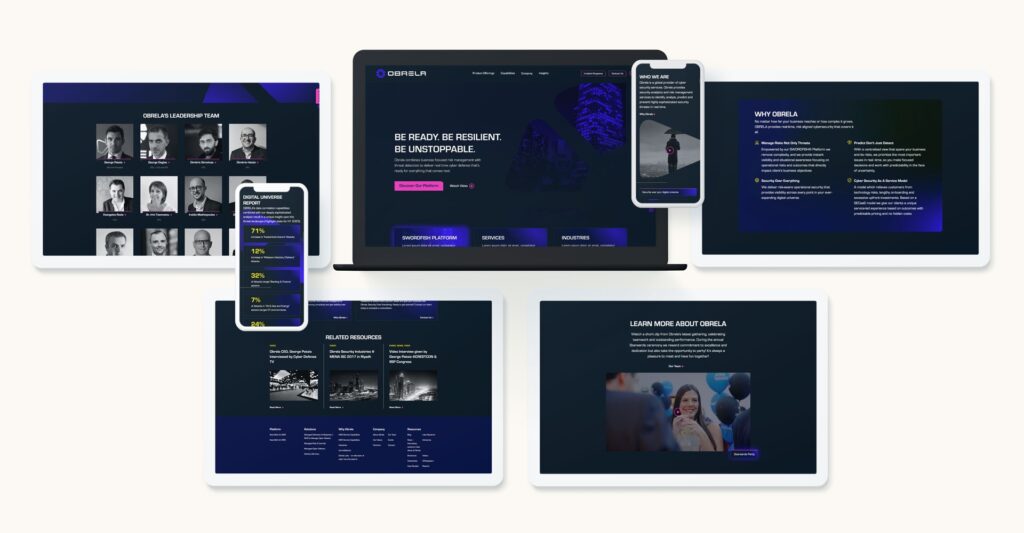
A digital marketing agency can help your company stay on top of the latest trends in cybersecurity and figure out a plan for how to address these trends in your overall marketing strategy. At Bluetext, we specialize in working with industry-leading cybersecurity professionals; see how we work with companies to build credibility in the realm of cybersecurity in this recent blog.
Curious about what other trends we expect to see in the upcoming year? Read our blog on the 2024 Future Forecast from Bluetext.
We are currently living through a transformation period where sustainability and conservation efforts have been thrust into center stage. Consumers are increasingly looking to businesses to take the lead in addressing environmental and social issues. This means it’s time to ensure your branding efforts reflect the environmental values of your customers so you can build trust and attract new customers.
To be able to stand out in the market and be seen as a company that is striving for sustainability, which encompasses more than just being environmentally friendly, but also socially responsible and economic viability, it’s time to develop a brand that exudes the values of being “green.” In this blog, we’ll lay the foundation for how to get there.
What Is Sustainable Branding?
Sustainable branding is an approach to branding that focuses on a company’s commitment to sustainability and environmental and social responsibility. It involves communicating a company’s sustainability values and highlighting initiatives it takes towards a more eco-friendly future. It encompasses a holistic approach that considers the environmental, social, and economic impact of a brand’s actions throughout its entire lifecycle.
What Does Sustainable Branding Look Like?
There are many ways to help your brand evoke the message of sustainability.
1. Color Palettes with Eco-Friendly Symbolism
The colors you choose for your brand evoke different emotions from your audience. For example, red symbolizes a brand that is ambitious, confident, and bold, whereas navy exudes responsibility, integrity, and peace.

When it comes to establishing a color palette that feels sustainable, green feels like a very obvious choice. However, other colors that reflect nature, such as neutral earth tones and blues, can evoke a similar feeling.
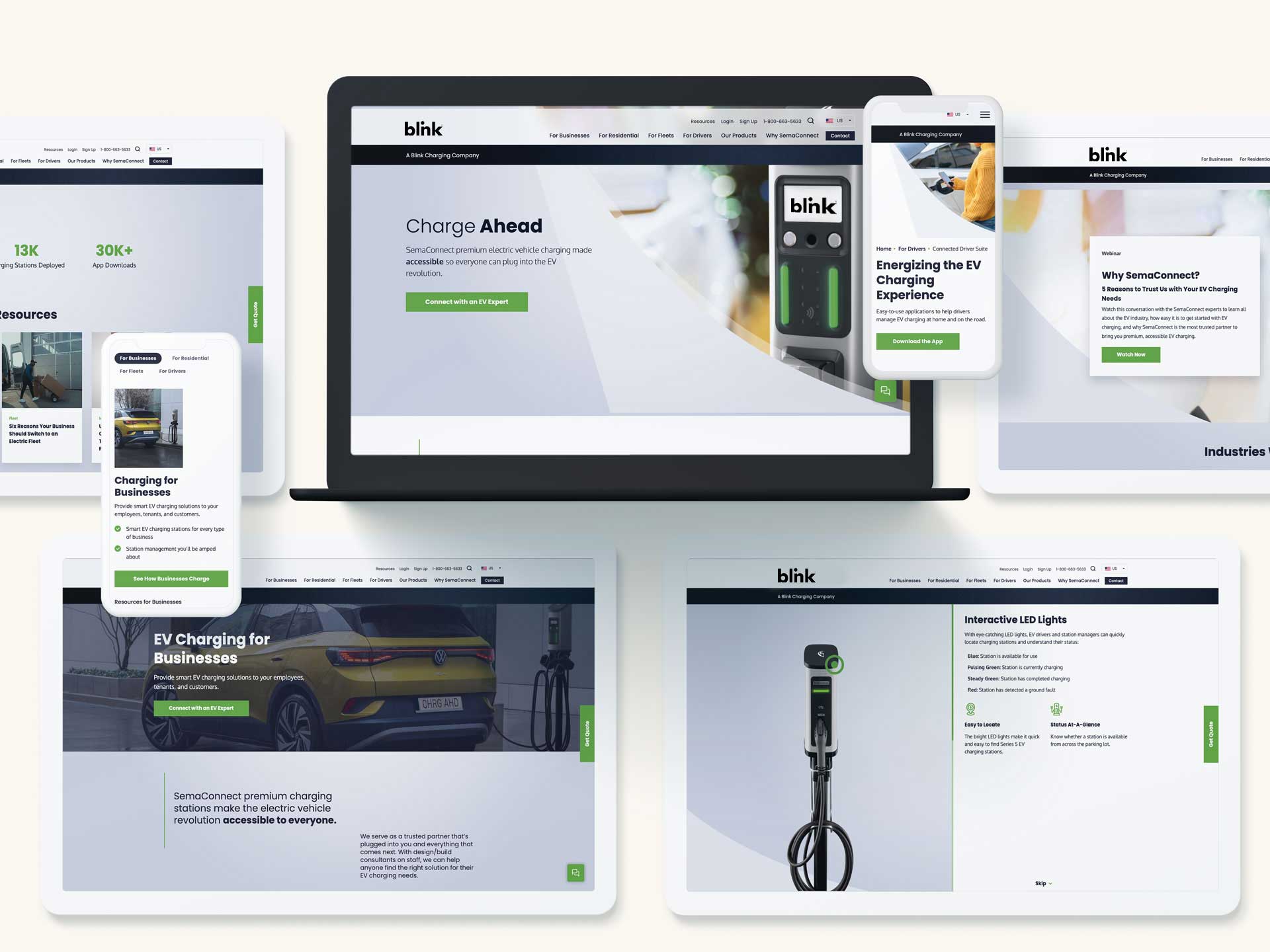
Bluetext client, Blink, knows a thing or two about sustainability. To emphasize their eco-friendly products and business mission, they utilize an eye-catching green with soothing cool blue tones and organic curves.
2. Eco-Friendly Typography
The typography you select for your sustainable brand can speak volumes about your brand’s values. Clean, sans-serif typography exudes modernity and reinforces the clean and minimalist values of your brand, and even reduces the amount of ink needed to print. Arial, Courier, and Garamond are considered some of the most print-efficient fonts on account of thin line work and minimal frills. But, did you know there are even fonts developed to minimize the amount of ink needed to print? This font, called Ryman Eco, maybe a little too custom for some businesses but serves as a great example of commitment to sustainable operations.

3. Nature-Inspired Imagery & Graphics
Your sustainable brand should incorporate visuals that reflect nature and eco-consciousness. Consider nature-inspired brand elements, such as plants or animals, to evoke a sense of environmental responsibility.
How to Establish a Sustainable Brand
However, sustainable branding goes beyond greenwashing or superficial efforts; it involves genuine efforts to minimize harm and make a positive difference in the world.
1. Establish a Timeless Design System
Look to establish a well-designed logo and brand system that can easily evolve. When you can keep the same logo, typography, color palette, and brand elements, you are innately going to reduce the number of manufactured branding assets you will need to update. For example, if your logo remains the same and you have a simple, yet effective business card design, you will not need to require your employees to throw out dozens or hundreds of business cards. The same goes for any printed collateral you hand out at trade shows or corporate events.
2. Consider Environmentally-Friendly Marketing Materials
Once your timeless brand is established, consider leveraging recycled materials and environmentally-friendly packaging for your marketing materials. This refers to everything from the type of paper you use for collateral to the ink you use on that paper. With so many options available today, there’s no excuse to not use environmentally friendly materials. Especially when 67% of consumers think it’s important that the products they buy come in recyclable materials.

3. Keep Design & Production Local
When you’re expanding your marketing efforts, consider producing and sourcing locally when possible. You can do so by finding a local branding agency to avoid long-distance travel or sourcing a local printer to avoid shipping produced materials over long distances.
Ready to get started with developing your sustainable brand? Contact Bluetext today to get started.
2023, wow, what a year! From Hollywood strikes to a new king of England, 2023 brought a treasure trove of pop culture moments and social movements that captured the world’s attention. But even amidst billion-dollar Taylor Swift tours and the cult of Pedro Pascal, one topic of discussion has dominated nearly every narrative. AI.
Unless you’ve lived under a rock for the past year, you’ve probably used or at least heard of generative AI tools. Actually, even the boulder dwellers among us have probably had ChatGPT write an email reply by now.
AI is everywhere, and that goes doubly so for the marketing world, with digital content marketing being the area with the most pronounced impact. So, get your reply prompts ready as we discuss how AI transformed the content marketing landscape in 2023.
Can AI Tools Keep Pace With the Trade?
2023 saw an explosive expansion of tools for writing blogs, drafting social media posts, designing graphics, and more, all through the power of AI. What usually takes content marketers hours to accomplish can seemingly be condensed into a matter of minutes. But, this raises the question of whether AI-generated content can provide the same value to marketers as work created by human writers and designers. The answer, as it turns out, isn’t so clear.

Finding the Art in Artificial Intelligence
Proponents of marketing AI tools are quick to cite their ability to increase productivity, support more consistent content schedules, and reduce creative resource use. It’s hard to argue that having content ready at the push of a button won’t improve your productivity and bring more potential strategies within reach.
On the other hand, AI skeptics focus heavily on the middling quality of work AI tools can produce. Many writers complain about a lack of creativity and personality in AI writing, which lessens reader engagement and leads to higher bounce rates from blogs and social pages.
Search Algorithms Side with Quality Over Quantity
While it remains to be seen whether AI generators can close the gap between man-made content and their own, it’s important to note that quality is already a major consideration for SEO purposes.
Google and large social media sites like TikTok emphasized their algorithms will prioritize high-quality content, AI-generated or not, over all else. So before you try gaming the system with a flood of keyword-littered AI essays, consider if your best bet actually to be seen is taking time to perfect one post.
Leading Brands Leverage AI Across the Enterprise, Will Yours?
Whether your business works with AI or not, it’s undoubtedly the hot new capability every marketing company wants to tout for themselves. 2023 saw marketing industry behemoths like HubSpot and Salesforce go all in on AI with new features and products featuring the technology added to their user platforms. Even advertising platforms like Meta’s Facebook and Instagram have integrated generative AI tools to assist marketers in leveraging the technology for targeted content creation.
As AI continues to evolve and expand in 2024, so will the possibilities for more curated content creation and deeper customer engagement. Whether its role will be augmenting content marketing or transforming media creation as a whole remains to be seen.
One trend we are confident will remain steady, and even grow in significance, is the focus on content development within B2B marketing roadmaps. Especially in a new era where previous boundaries around writing resources and bandwidth have been leveled by technology, companies are enabled to efficiently produce content at scale. Whether or not that content is right theme or voice for their audience, that’s a different story. That’s where an agency partner can come in handy to ensure any AI tools and new technology are working for you, not against you.
Curious where a stronger content strategy could take your business in the new year? Contact Bluetext to learn more about messaging, positioning, content marketing and more.
As we step into a new year, our thoughts revolve around new resolutions, new fad diets, and the colder months ahead—but what we should be thinking about are the digital marketing trends of 2024. With technological advancements, changing customer behaviors, and an ever-present need for content, the marketing landscape continues to evolve at a rapid pace. From cookie consent to 70s nostalgia, there are several digital marketing and design trends to look out for in 2024.
Data Enrichment Tools
In times of economic uncertainty, the importance of maintaining fresh and accurate customer data is more important than ever before. Data enrichment is the process of enhancing and refining existing data by supplementing it with additional information from external sources, such as platforms like Apollo, ZoomInfo, or 6Sense. This additional information can include points such as demographics, firmographics, social media profiles, geolocation, and more—enriching your customer dataset can improve the overall quality, completeness, and accuracy. By incorporating external tools and solutions, your business can gain deeper insights into prospective leads in 2024.
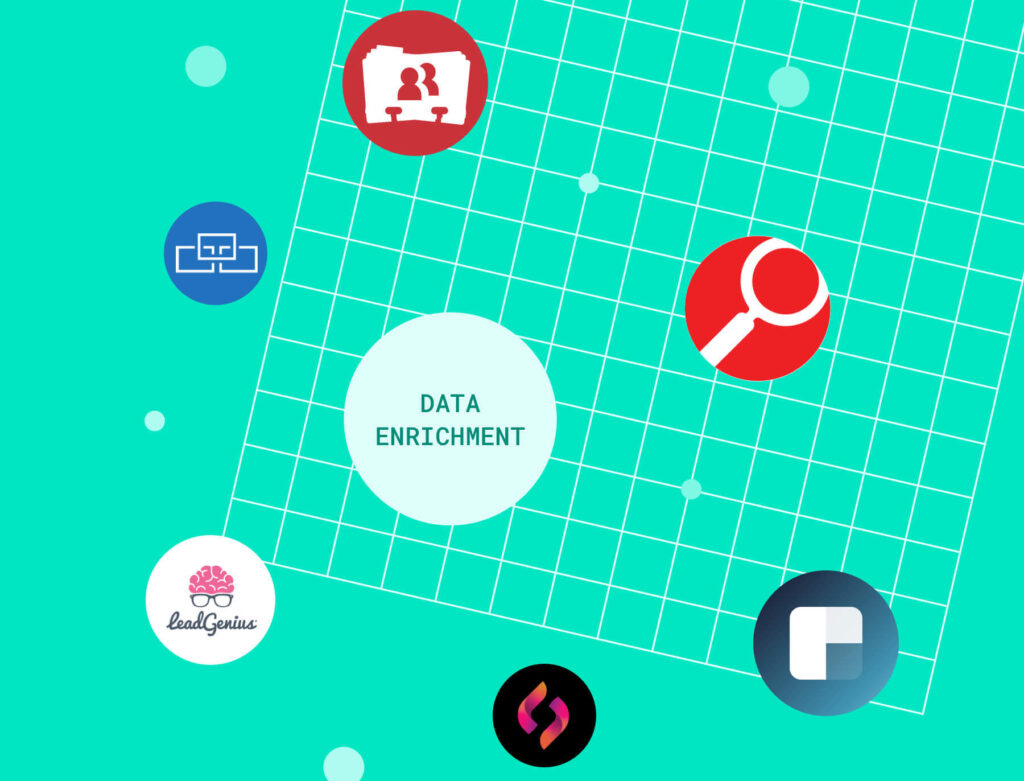
Digital Orchestration
In today’s business climate, companies face fierce competition to capture the attention of their target audience. To succeed, it is crucial to leverage multiple marketing channels effectively. Four key components of a comprehensive marketing strategy are SEO, Paid Media, Social Media, and Content Development. At Bluetext, the integration of these marketing strategies is known as digital orchestration. There are infinite benefits in streamlining these services in an integrated way, some of which include cost-effectiveness, consistent brand messaging, efficient resource allocation, and enhanced data analysis. To learn more about how Bluetext can lead the orchestration of your digital marketing channels in 2024, contact us.

AI’s Continued Rise
Artificial intelligence (AI) will continue to revolutionize digital marketing in the new year, with an emphasis on providing hyper-personalization. Businesses are increasingly adopting AI to gain deeper insights into customer preferences and deliver tailored experiences; algorithms can analyze vast amounts of data to understand individual consumer preferences, enabling marketers to deliver highly personalized content, recommendations, and offers. From personalized emails to dynamically customized website experiences, brands are using AI-driven insights to tailor their messaging to a tee.
Cookie Consent & Data Privacy
Privacy concerns regarding data have been a prevalent issue for the majority of consumers in 2023. As we transition into 2024, brands will need to prioritize transparent data handling, comply with privacy regulations, and communicate their commitment to ethical marketing. As of January 4th, 2024, Google has officially announced its plan to phase out third-party cookies by the third quarter of this year. In place of cookies, several businesses have started creating their own tracking systems. Experimenting with other alternatives can help your business become more digitally resilient, which is key to thriving in the ever-evolving digital marketplace. Building trust with your audience by being transparent about the information you collect should be a priority moving forward in 2024.
Social Media Optimization
In the past, marketers have focused on optimizing websites and content to achieve higher rankings on search platforms like Google and Bing. However, a paradigm shift is occurring, and the most forward-thinking marketers are now giving equal attention to optimizing social media content. Recent data from Google revealed that approximately 40% of Generation Z relies on platforms such as TikTok and Instagram for search instead of traditional search engines. Consequently, it is now more crucial than ever for digital marketers to pay attention to details like keywords and metadata in their social media posts. This shift also emphasizes the significance of crafting captions that incorporate relevant keywords and descriptive information to enhance a brand’s discoverability.

YouTube & Podcast Marketing
To no one’s surprise, YouTube and podcast marketing should be top of mind for businesses throughout the new year. YouTube, with a massive user base and diverse content ecosystem, has become a powerhouse for visual storytelling and product promotion through YouTube ads. The platform’s algorithmic sophistication and personalized recommendations enable businesses to reach targeted audiences, fostering engagement and brand loyalty. On the other hand, podcast marketing has flourished as an intimate and portable medium, for audiences looking to consume content on the go. The rise of niche podcasts that cover specialized topics has provided businesses with unique opportunities for tailored advertising and sponsorships.
Design Trends: 70s Nostalgia
We’ve seen the resurgence of Y2K, glitter, and abstract minimalism in 2023, but designers are taking a different nostalgic route this year by drawing inspiration from the funky aesthetics of the ‘60s and ‘70s. We will see faded retro color palettes, handmade illustrations, and an overall laid-back look and feel. Think retro stripes, floral or unconventional patterns, and film-like imagery. Why exactly are we yearning for ‘70s aesthetics? It could have something to do with the massive wave of artificial intelligence, quantum computing, and information sweeping over us—whatever the reason, 2024’s collective need to reminisce on the simplicity of the past is something we’re excited to see reflected through design.
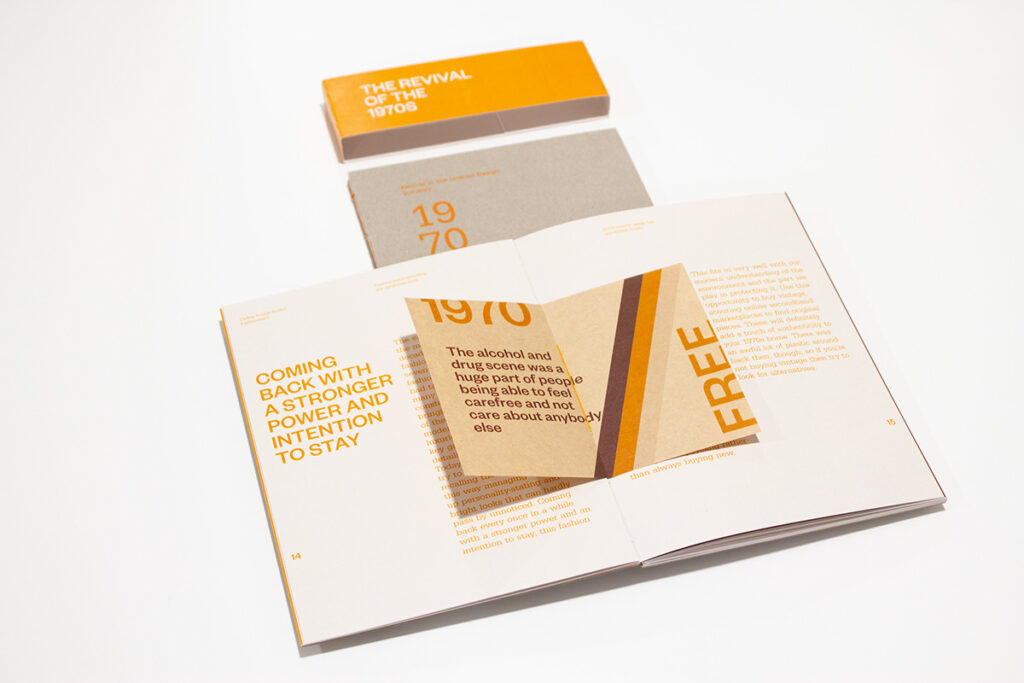
To Wrap Things Up…
As we navigate through 2024 together, staying ahead of these trends will be instrumental in creating successful and resonant campaigns. Digital Orchestration, data privacy, and social media optimization are just a few of the cornerstones of a future-ready digital marketing strategy. As they say—out with the old, and in with the new!
Want to learn more about how Bluetext’s marketing services can make your 2024 dreams come true and help you to stay ahead of the curve? Contact us today.
This past Thursday creatives around the world kept their eyes out for a highly anticipated announcement: the 2024 Pantone Color of the Year. An annual tradition now 25 years old, Pantone’s hue selection usually sets the stage for design & style trends for the upcoming year. Take 2023 for example, when “Viva Magenta” foreshadowed the upcoming wave of Barbie-core pinks that dominated the design world.

The finalist for 2024? Peach Fuzz, a neutral pink-orange hue the company describes as “gentle,” “velvety,” “contemporary” and “nurturing.” Pantone’s Leatrice Eiseman, explains: “Peach Fuzz brings belonging, inspires recalibration, and an opportunity for nurturing. Drawing comfort from PANTONE 13-1023 Peach Fuzz, we can find peace from within, impacting our wellbeing.”
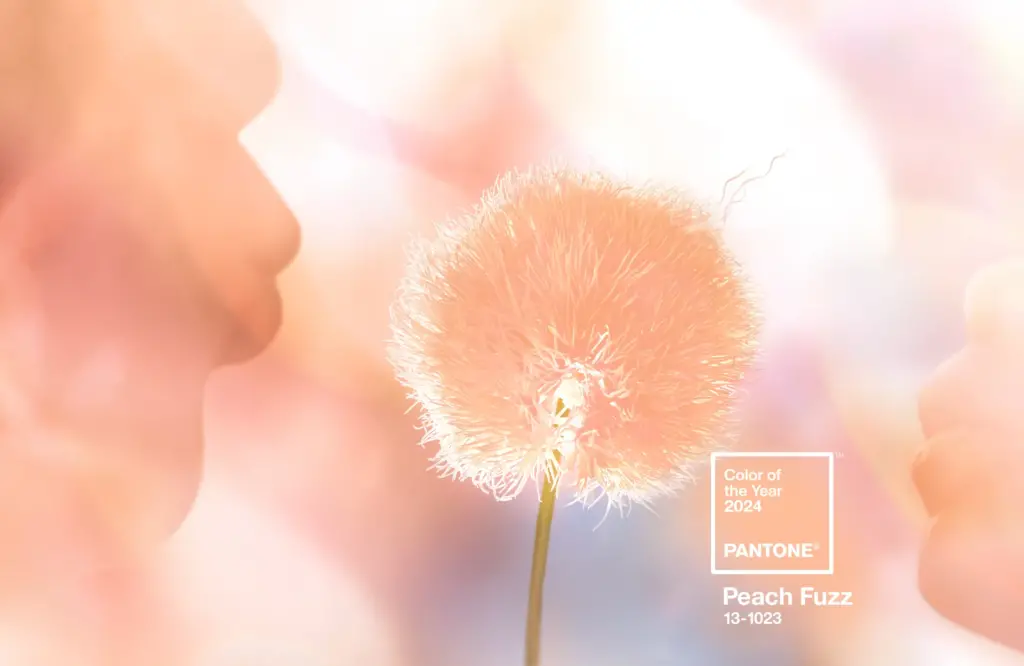
All the buzz around the fuzz got our creative wheels spinning, what was Bluetext’s color of the year? We decided to turn the tradition on its head and reflect back, rather than forecast forward, on our most inspired color palettes of the past year.
In the eyes of Bluetext’s creative director, Jason Siegel, Libertas’ iconic green-based palette stood out. As a financial services company, green tones are a bit on-the-nose, however the Bluetext creative team sought out to question and redefine the obvious. Marrying deep, jewel-toned emeralds with energetic pops of neon kelly green breathed a new life into an established brand. Torn between a determination to stay true to its root, and desire to innovate and prove its technology prowess to the market had been a long standing challenge for Libertas, but finally solved with the support of Bluetext’s creative expertise.

Another fan favorite of the Bluetext team has been Obrela, who proved real threat detectors do wear pink. The cybersecurity company’s website features a predominant dark mode theme, using a deep indigo gradient to backlight vibrant pops of fluorescent pink and highlighter yellow. As a creative agency with long standing experience in the cybersecurity market, we’re no stranger to the color blue. It’s tried and true across many industries, with a trustworthy color psychology and professional tone. What we love most about the Obrela color palette is the ability to bridge tradition with nuance. A successful balance of the familiar and the uncomfortable, using well known tones as majority with the thought provoking pops of pink strategically placed at critical conversion points.

Ultimately, we here at Bluetext feel 2023 has been a year of creative success. We’ve seen a trend of vibrant color schemes making its way across the B2B landscape. Often paired with a darker or more muted tone within the same color family, but definitely standing out in unique ways. As we approach 2024 we can only look forward to more modernized monochromatic schemes, particularly ones that seek to balance energy with expertise.
Are you looking to refresh your brand in 2024? Contact us at Bluetext to learn how we can partner with you.